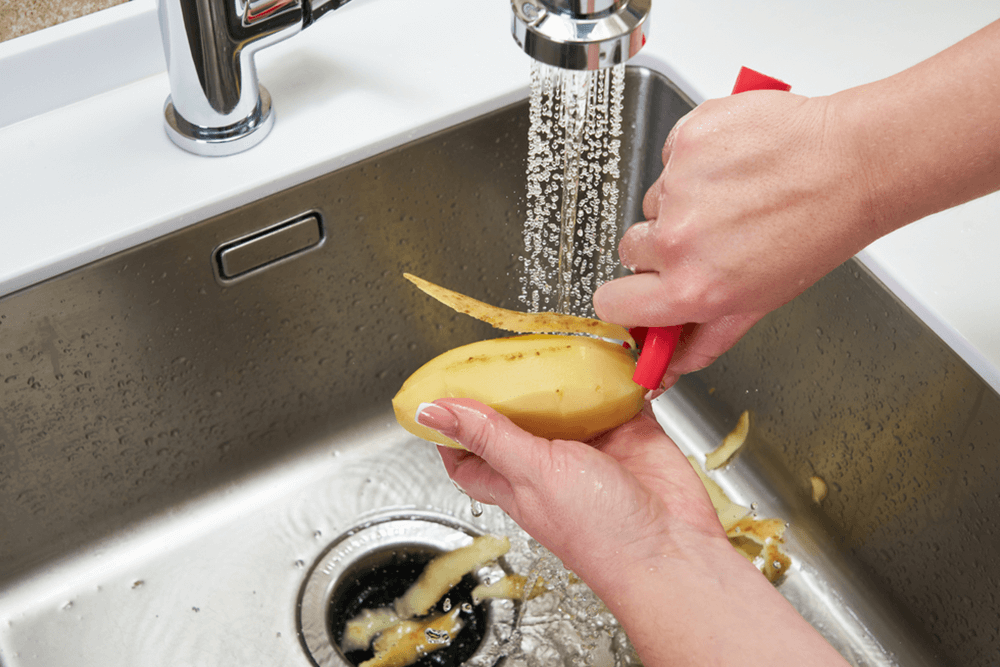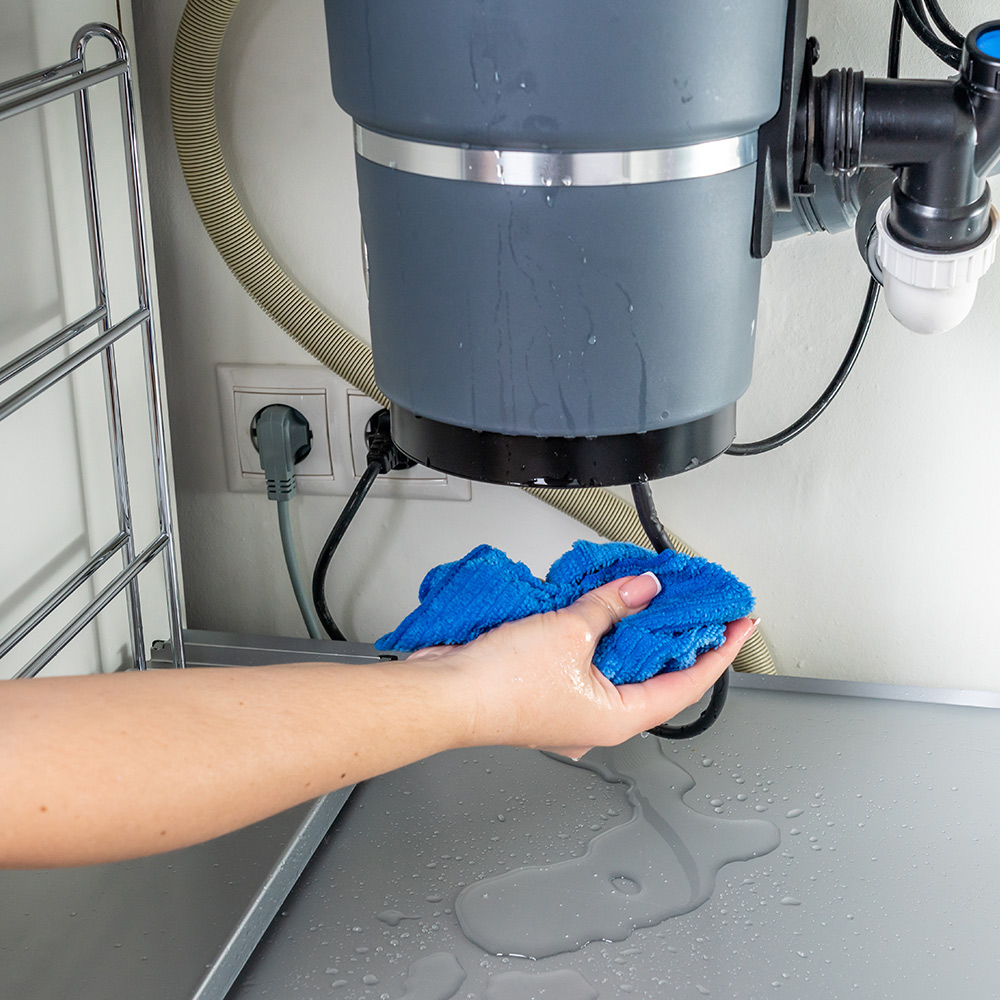What're your thoughts about How to fix a pretty consistent leak from my garbage disposal?

Waste disposal unit are important kitchen area home appliances that help in throwing away food waste successfully. Nonetheless, a dripping waste disposal unit can be an aggravating and unpleasant trouble to take care of. Fortunately, many leakages can be dealt with conveniently with a couple of easy steps. In this write-up, we will discuss just how to take care of a dripping garbage disposal properly.
Intro
Waste disposal unit are installed under kitchen area sinks and are designed to shred food waste right into smaller sized items, enabling it to travel through the plumbing system quickly. While these tools are normally trusted, leakages can occur over time because of damage, loosened links, or damage to the device.
Common Sources Of Leaks in Trash Disposals
Worn Seals and Gaskets
Seals and gaskets play a vital role in avoiding water from leaking out of the waste disposal unit. In time, these components can weaken, bring about leakages around the disposal device.
Loose Connections
The connections in between the garbage disposal and the plumbing system can become loose in time, triggering water to leak out during operation.
Fractures or Openings in the Disposal Unit
Physical damages to the garbage disposal, such as fractures or openings in the housing, can also cause leakages.
Identifying the Source of the Leakage
Before attempting to fix a leaking garbage disposal, it is vital to determine the resource of the leak. This can typically be done through visual assessment or by performing easy examinations.
Visual Inspection
Inspect the waste disposal unit unit thoroughly for any type of indications of water leakage. Pay very close attention to locations around seals, gaskets, and link factors.
Testing for Leakages
One method to examine for leaks is by running water with the disposal device and looking for any kind of visible signs of leakage.
Tools and Products Needed for Fixing a Leaking Garbage Disposal
Prior to beginning the repair procedure, collect the necessary tools and products, consisting of a screwdriver, flexible wrench, plumbing's putty, substitute seals or gaskets, and epoxy or patching product for repairing splits or holes.
Step-by-Step Overview to Taking Care Of a Dripping Waste Disposal Unit
Shut off the Power
Before attempting any repair services, make sure that the power to the garbage disposal system is switched off to prevent the threat of electrical shock.
Find the Leak
Recognize the exact place of the leak and identify the reason.
Tighten Connections
Make use of a wrench to tighten up any kind of loose connections in between the disposal unit and the pipes system.
Replace Seals or Gaskets
If the leak is because of used seals or gaskets, get rid of the old parts and change them with new ones.
Patching Cracks or Openings
For fractures or openings in the disposal device, usage epoxy or an appropriate patching material to seal the damaged location.
Checking the Waste Disposal Unit After Repair Service
When the fixing is complete, check the waste disposal unit by running water with it to make sure that the leakage has actually been fixed.
Preventive Maintenance Tips to Stay Clear Of Future Leaks
To prevent future leaks, it is vital to carry out routine upkeep on your waste disposal unit. This includes maintaining it tidy, avoiding putting non-food products or tough items down the disposal, and periodically checking for leakages or other problems.
Verdict
Finally, repairing a leaking garbage disposal is a relatively straightforward procedure that can be completed with basic devices and materials. By complying with the actions described in this article and exercising precautionary upkeep, you can keep your waste disposal unit in good working condition and stay clear of expensive fixings in the future.
HERE’S HOW TO FIX YOUR GARBAGE DISPOSAL
WHAT TO DO IF SOMETHING IS STUCK IN YOUR GARBAGE DISPOSAL
If the impeller won’t turn, there’s probably something stuck in the disposal. It could be a steak bone or peach pit, although plumbers report pulling all sorts of inappropriate objects out of disposals, such as bottle caps or aluminum foil. Make sure power to the disposal is off, and look inside to see if you can see the source of the jam.
Never stick your fingers in a disposal. Pull out anything you see with tongs or pliers.
If the disposal still won’t work, it may be time to call a plumber or consider buying a new disposal. GEM Plumbing & Heating is here for all of your garbage disposal needs.
WHAT TO DO IF YOUR GARBAGE DISPOSAL DRAIN IS CLOGGED
- Take everything out from underneath your sink and put a bucket or other container under your disposal to catch any water that drains out.
- Disconnect your disposal from the power supply.
- If it’s plugged into a wall outlet, unplug it.
- If it’s hardwired into an electrical box, go to the electrical panel and turn off the breaker for the disposal.
- Pour ¼ cup of baking soda into the drain, followed by ½ cup of white vinegar. Give the solution a few minutes to fizz and do its work.
- Look into the disposal with a flashlight to see if you can see an object that might be causing the clog. If you see it, remove it using tongs or pliers.
MORE TIPS ON DEALING WITH A CLOGGED GARBAGE DISPOSAL
- Never use drain cleaner in a garbage disposal. It can damage the plastic parts inside the disposal. You can also be splashed with the caustic liquid while working to clear the clog.
- Beware! Never stick your fingers into a garbage disposal. Trust us — not a good idea.
- In many instances, your dishwasher drains through your garbage disposal. This allows the disposal to grind any large food particles that may be drained out of your dishwasher. There are some jurisdictions, however, where the plumbing code prohibits such a connection.
WHAT TO DO WHEN YOUR DISHWASHER DRAINS THROUGH THE DISPOSAL
- Run some water in the sink so your plunger has at least a ½-inch of water to create a seal and plunge vigorously up and down several times. You may need to repeat this several times.
- Run hot water down the drain to clear any residue that remains.

We hope you liked our part on Why Is . Thank you for taking the time to browse our piece of content. Feel free to take the time to promote this blog post if you enjoyed it. Thanks a lot for taking the time to read it.
Request A Quote
Comments on “Straightforward Ways to Repair a Leaky Waste Disposal Unit”